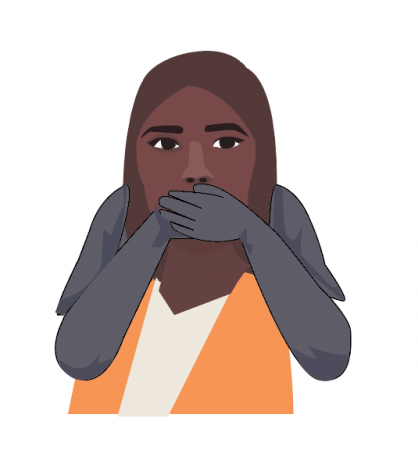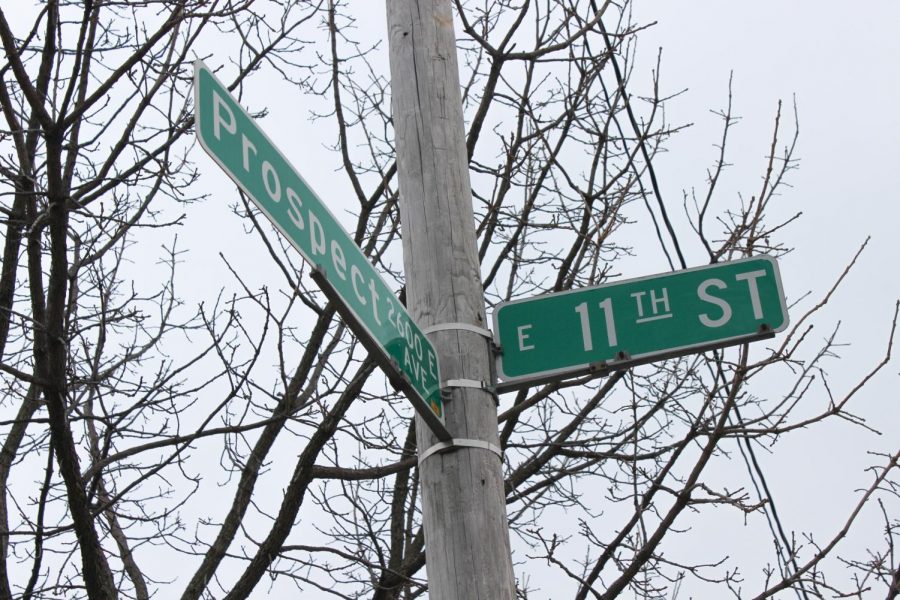Domestic Violence Spike in Kansas CIty
An over 20% domestic violence spike in Kansas City during COVID-19 lockdown has given shelters new and unique problems with helping the increased victims while following COVID-19 protocols.
February 10, 2021
As Kansas City and the world faced the COVID-19 pandemic many faced the reality of being stuck at home due to lockdown orders. However, this created an unexpected spike in domestic abuse in Kansas City and around the world.
According to a statement made by the Kansas City Police department, domestic violence rose 22% in 2020. Student counselor Amanda Whitcomb believes this is due to abusers having more access to their victims.
“I think that it is just simply because everyone is at home more often,” Whitcomb said. “With abusers at home they have more access to the people they are abusing, and this heightens the abuse.”
Psychologist Josie Serrata, PhD, a research and evaluation consultant and co-owner of Prickly Pear Therapy and Training, in an interview with APA believes that the increase has to do with the stress and lack of control abusers feel especially in the year 2020.
“We found social factors that put people more at risk for violence are reduced access to resources, increased stress due to job loss or strained finances, and disconnection from social support systems,” Serrata said.“With this pandemic, we’re seeing similar things happen, which unfortunately leads to circumstances that can foster violence.”
Whitcomb agrees with Serrata, that lack of control can play an important part in domestic abuse.
“Abuse is about power and control,” Whitcomb said. “People seek power and control in many different ways and unfortunately abuse can be an unhealthy way of doing so.”
Whitcomb believes that this need for power and control is also a reason why over 85% of victim survivors are women. She also thinks that culture affects the way men view themselves and women.
“In our society men are conditioned to believe that they must be strong and they must be powerful, and men don’t show emotion, don’t cry, while women are the opposite,” Whitcomb said. “If there is a man who is raised to be strong and powerful and has a woman or someone in his life that challenges this power, abuse can very quickly come into the situation.”
Despite the horrors that victims often face, according to government statistics for domestic violence, it takes a victim survivor an average of seven tries before they finally leave their abusers. Whitcomb believes that this is out of fear.
“When their abuser feels that they are losing their power, that is when it can become the most dangerous,” Whitcomb said. “Oftentimes people in these situations can be threatened by the abuser saying, “if you go and get help I will kill you,” and that can be a very real threat and a very scary threat.”
With all the strength and courage that it takes to leave, Whitcomb believes that local shelters are an important place for people to have somewhere to go.
“It just gives people a place to go because oftentimes they have been isolated from family or friends as a part of their abuse, so they don’t have people they can turn to,” Whitcomb said. “If that is the case, especially for someone who has children, to have a safe place to go is every thing.”
thing.”
Jess Harman, advocacy and education manager at Rose Brooks domestic violence shelter, also believes in the importance of having a place to go especially in lower income communities.
“If someone in a higher socioeconomic class is experiencing domestic violence more than likely, but not always, they have the resources to be able to leave and get a new place to live and fly somewhere new, or start over and not involve the police,” Harmen said. “But if you don’t have money or resources, where do you go?”
Poverty as well as race play an important role in abuse. According to a study done by the Centers for Disease Control and Prevention, Black and Indiginous women domestic violence rates are 30 to 50% higher than what is experienced by white, non-Hispanic, Hispanic and Asian women. Harman believes that this is due to white supremacist culture.
“I think that marginalized groups and races are oppressed,” Harman said,“I think that they have a limited freedom from violence, and what it means to be Black, Latin X, Asian, Indieginous or a person of color in a white supremacist culture is that you are you are unable to escape from a culture of violence that has become normalized.”
Along with history and culture Harman believes that the much higher statistics are because of the statistics gathered.
“These statistics are gathered from police reports, and there’s a definite over policing of Black neighborhoods,” Harman said. “I also think that people with financial means in middle to upper class socially economic neighborhoods, that there is less inclination to involve the police because of reputation and money.”
Rose Brooks through their many programs such as:clinical help, substance abuse help, employment and housing, and medical help works to help those with nowhere else to go to help get their life back on track, and this is why Harman chose to work there.
“I chose to work at Rose brooks because of the breadth and depth of their programs,” Harman said. “When someone comes into the shelter they are assigned an advocate, a clinician and a case manager. This helps to alleviate the burden of trying to seek that out because people have it available to them day one.”
Harmen also recognizes the changes that Rose brooks has had to make this past year due to COVID-19,and the spikes in domestic violence.
“Around the KCMO metro area there are six shelters, and everyone took a different approach, what we decided to do immediately was rehouse everyone,” Harman said. “We rehoused everyone in hotels, but we still provided them with the same programs they would have, but just providing them with their own rooms.”
Harman feels that by doing this Rose brooks was able to prioritize the thing it values most—safety. She also recognises that this would not have been able to happen without the support of the community.
“Our first response was making sure that we were ensuring safety,” Harman said. “What has happened over 2020 is that through the support of the community, we have received funding and donations to the extent that we have changed our shelter that we now can house people in their own individual rooms.”
Harman believes that community support is not only an important role in shelters but also an important role in stopping domestic violence as a whole.
“Abusers win by making victim survivors feel alone,” Harman said. “By having a supportive community that doesn’t blame survivor victims, but supports and protects them we can end the cycle of domestic violence.”





